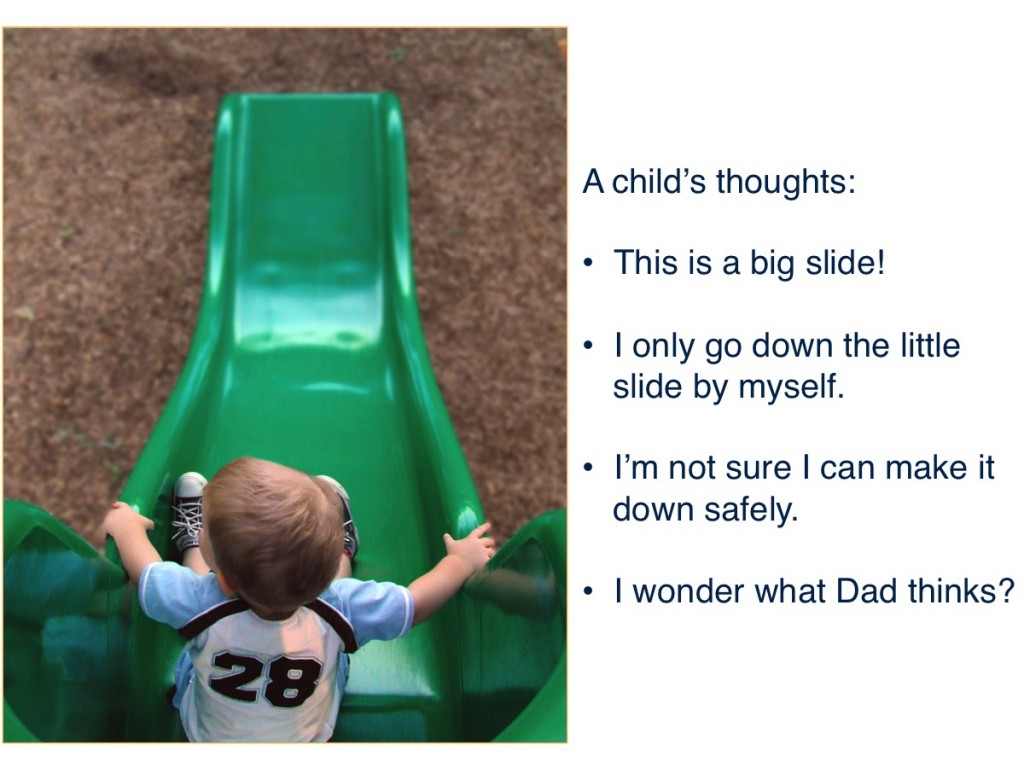
Once children are able to share attention to objects, they can begin to learn from their caregivers in new ways. Children begin to look to an adult as an emotional guide. The child seeks emotional information from the adult (like facial expression or tone of voice) when the child is unsure how to act or respond in a situation. This is called social referencing. It is one type of emotional communication.
Imagine a toddler who reaches the top of a new slide that looks steeper than the ones he has been on before. He might look to his caregiver’s face for clues as to whether it’s okay to continue. Is this slide dangerous or safe? If he sees a look of fear on his caregiver’s face, it is likely he will not continue down the slide. But if his caregiver gives him a reassuring look, he will probably slide down.
People’s emotional signals can change how we interpret and respond to a situation. For example, have you ever noticed a toddler fall down and then base his response on how his caregiver reacts? The child looks to the caregiver as if to say, “Should I be upset here?” If the parent expresses fear or worry, the child may become upset. However, if the parent smiles and says, “You’re okay” the child may not have a negative reaction. In this way, the child absorbs the emotional reactions of his caregivers. The caretaker’s emotions in the first 3 to 5 years of life are profoundly influencing the child’s development.
How and when children seek social information will vary by child, his skill level and the situation. As children learn more about their abilities and environment they will look to their caregivers less often. They become more independent in their decisions. So, after the toddler gets a reassuring look from his caregiver and successfully goes down the slide a few times on his own, he will know he has the ability to do it, and will no longer need to look to his caregiver for help and emotional guidance.
-
- Dyadic interaction
- a back-and-forth exchange between caregiver and child
- Self-regulation
- the ability to control our behaviors, emotions, and impulses
- Social emotional development
- learning to express and manage emotions and form positive relationships
- Social referencing
- looking to an adult for emotional information in an uncertain situation
- Triadic interaction
- a back-and-forth exchange between caregiver, child, and object